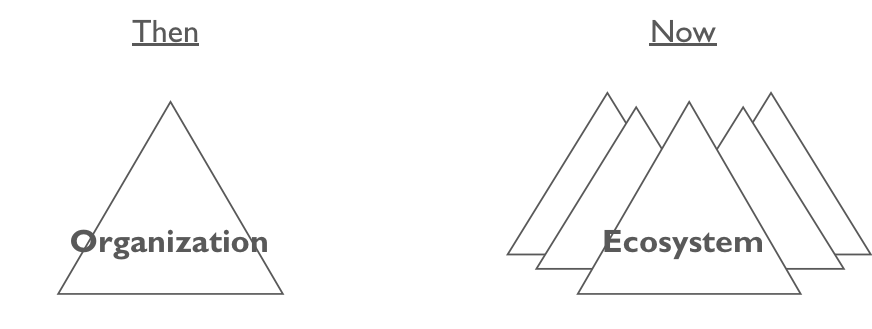The emerging imperative is to integrate human factors as a key element of influencing your partner ecosystem. Very few firms spend significant leadership time and effort thinking about how human factors impact partner organizations: How can we help create an ecosystem that employees of partner organizations are proud to be involved with? How can we enable an honest, effective and trust-based flow of communication between parties? How can we use this project to help our partners grow their people so they are even better positioned to serve us in the future?
In my experience working with senior executive teams, I’ve repeatedly seen firms achieve significant breakthroughs when they begin to consciously and consistently manage human factors in addition to the technical side of the business. While more challenging, the potential impact is even greater when leading across organizational boundaries. Companies that act quickly to master the skills required by this new approach will gain a significant competitive advantage. Those that do not may soon face significant challenges.
If you are looking to incorporate active management of human factors in your partner relationships, consider these four steps:
1. Understand the current reality.
We have found that a shared understanding of the current context is necessary to effectively manage complex relationships and to develop trust between parties. A process to get honest feedback from partners about both the technical and human elements of the partnership can be complicated by the fact that there are often power imbalances and commercial agreements at risk. A third party can be very helpful in navigating these waters with Enterprise 360s and other tools.
2. Establish open lines of honest, human communication with partners.
Once a baseline assessment of the state of affairs has been established, it’s essential to open lines of communication to allow each party to be heard. Ask your partners: How is this situation affecting you? What impact are our actions having on you? What can we do to enable our partnership to be more effective for you? What unintended consequences have we created for our teams? The goal at this phase is not to agree with each other, but to understand each party’s point of view
3. Develop a shared vision of co-prosperity that creates clarity about roles and intentions.
Too often, given the limited and episodic flow of information between organizations, partner relationships are fraught with uncertainty. In the absence of clarity, partners sometimes end up assuming the worst. Working together to identify and envision a future where the relationship serves both parties is a path to increasing commitment and intention and is a powerful hedge against turbulence and risk. The clarity that this generates frees everyone involved to focus on adding value rather than protecting against imagined threats. A clear vision where everybody wins enables technical focus and human commitment.
4. Develop a cadence that makes space for both the technical and human elements of the relationship.
The mature organizations we work with already have a well-established cadence for handling the technical aspects of their partnerships, from a contract negotiation cycle to audits to quarterly business reviews. Often, all that’s needed is to make space in already scheduled touchpoints to address human questions like: How are engagement levels at the factory? What impact is that having on our results? How was our recent contract negotiation process? Did we make space to really hear and address each other’s needs?
It’s both natural and common to think that adding human questions to the already overwhelming technical questions partner managers face every day will result in an even heavier workload. But our experience working in this domain has shown that even small investments of time spent on human factors generate comically disproportionate results. People who feel listened to and respected don’t just work harder, they proactively and passionately look for ways to enhance the partnership.
The intensity, speed and complexity of global business and ever more complex webs of partner relationships demand that we expand the scope of our awareness and recognize that the success of a firm often depends more on people outside the firm than inside it. The next generation of high-performance leaders will rely on both technical and human levers to influence the ecosystems of value they lead, both within their own teams and in partner organizations.











